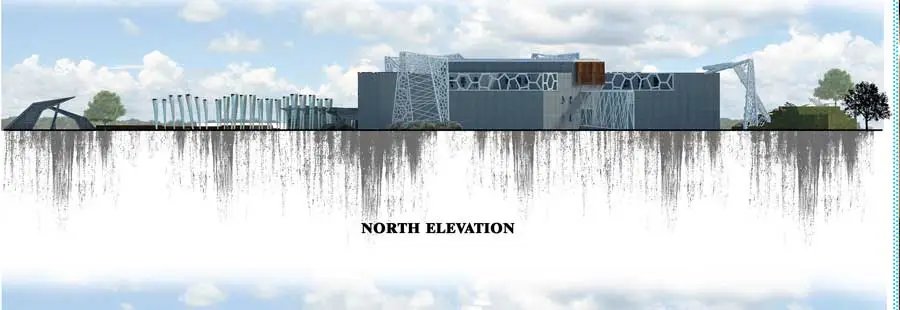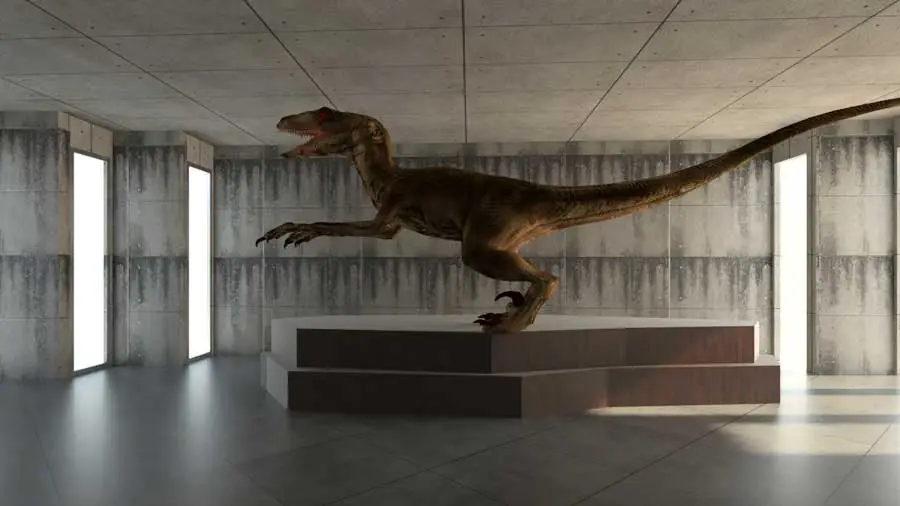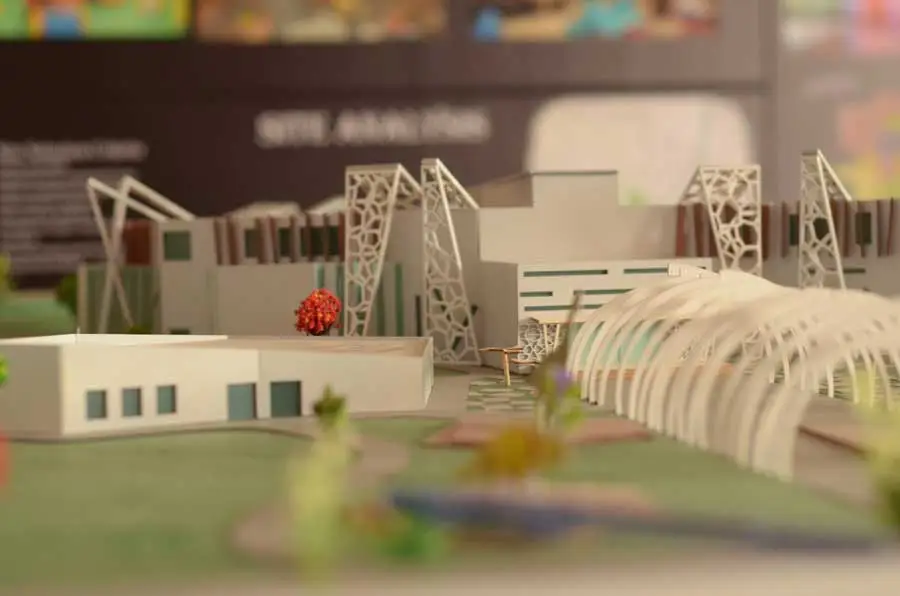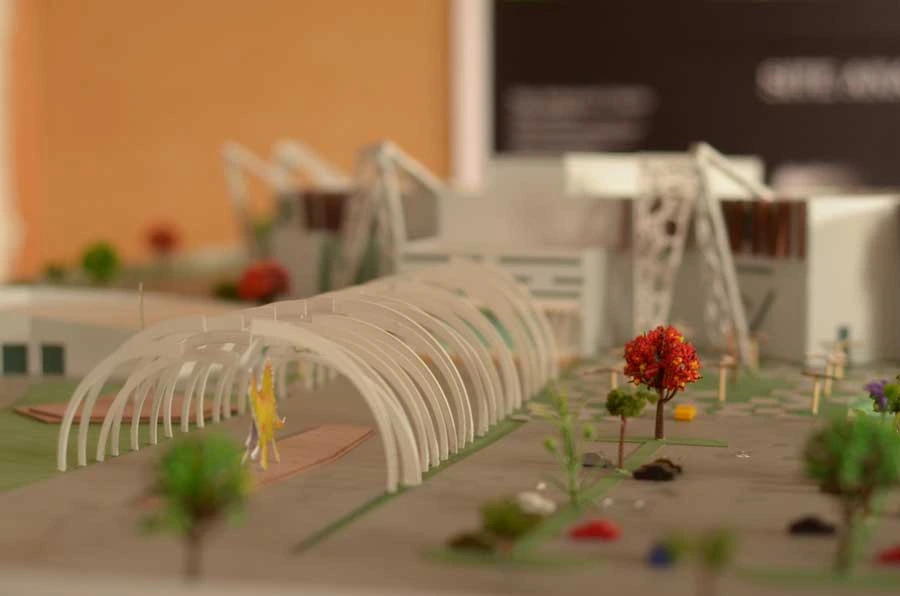
Project |
Natural History Museum |
| Type | Academic Projects |
| Location | Lahore, Pakistan |
| Area | 9 Acres | 71.4 Kanals | 321,300 sq ft |
| Student | Aitzaz Ul Hassan |
| Roll no | B.Arch 14214 |
| University | Superior University of Lahore |

PROJECT STATEMENT
Pakistan ministry of science foundation proposed two museums in Pakistan, one was built in Islamabad in (1976), and due to less collection of specimens, they made only one museum. Now the specimen collection is more remarkable than 3lac, and the natural history museum Islamabad does not have enough space to display the entire collection. That was the purpose of the new natural history museum in Lahore.
The project shall include a comprehensive museum dedicated to the natural history of the earth and the universe, a research centre and related facilities, and some support facilities. The project aimed to provide public education, entertainment and experience the past natural history.
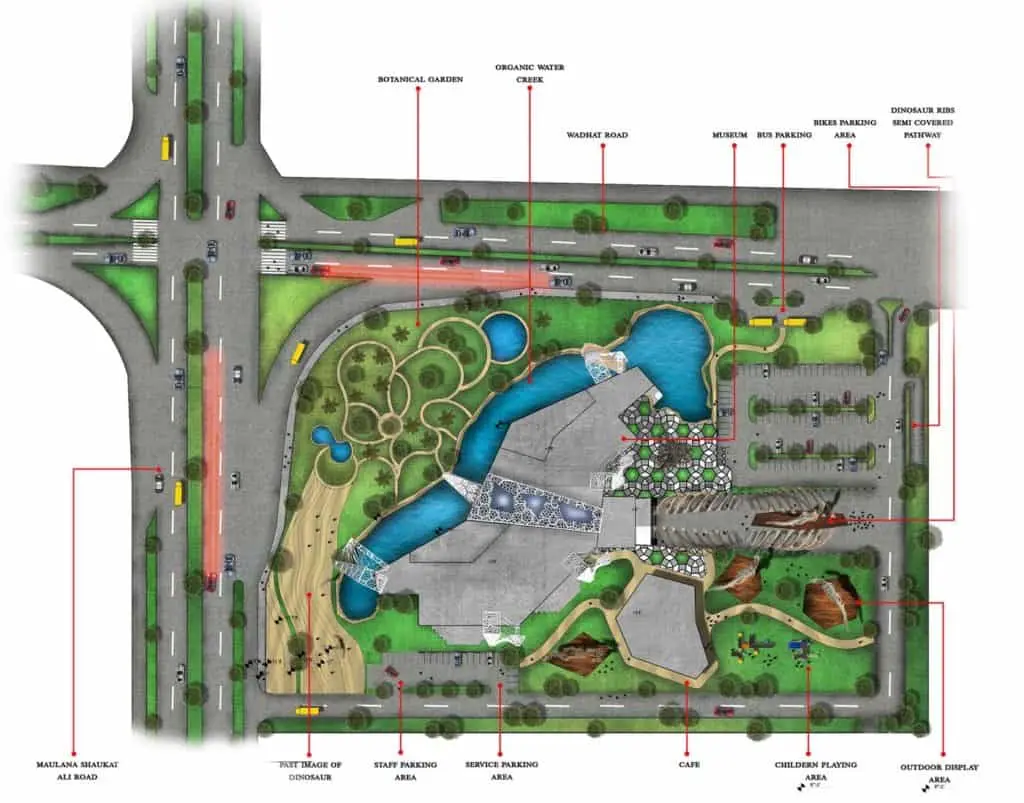

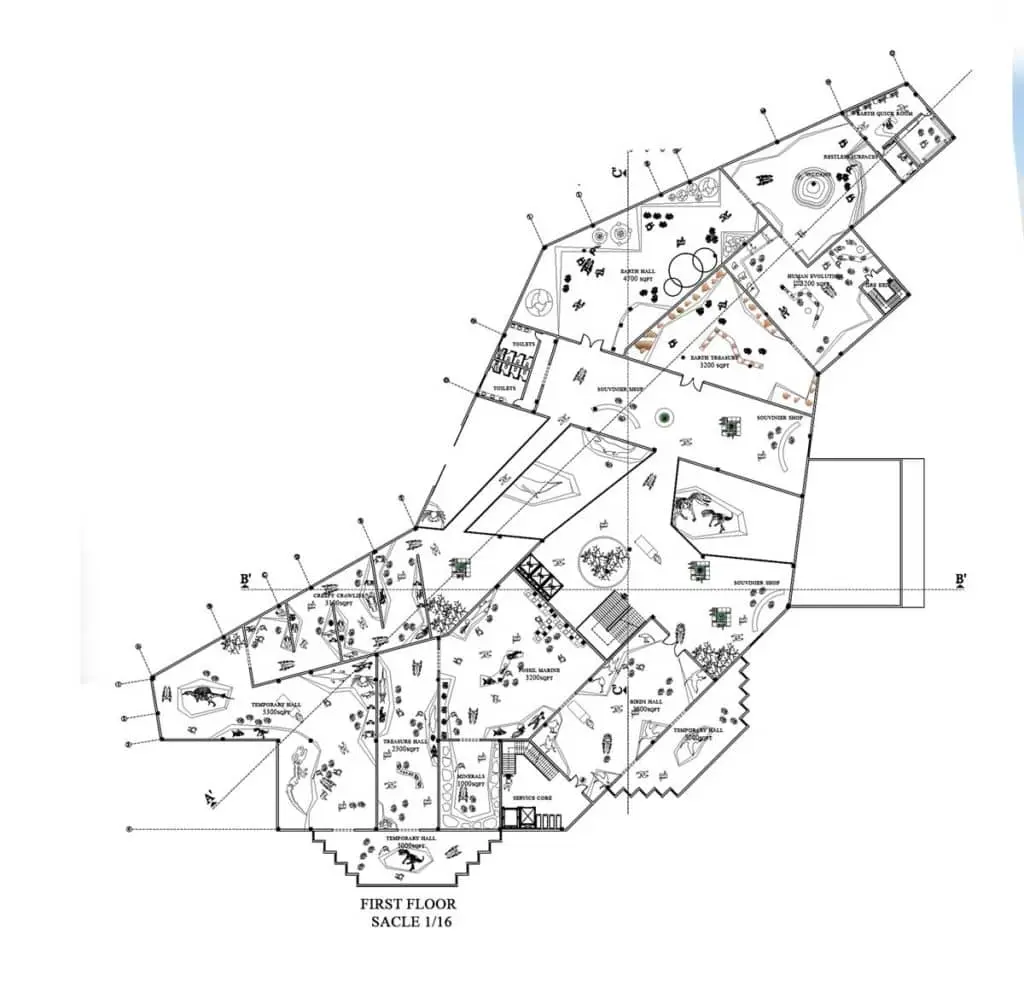

OBJECTIVES
- To understand the natural world and our place in it. A natural history museum is a complete demonstration of how nature, man and human culture function—an interpretation of the current environment in the light of the past.
- To discover, describe, and interpret the significance of new facts, new organisms and patterns in the natural and cultural world.
- To interpret the natural world as an interconnected, interdependent system and the nature of the human connection to that system.
- To interpret the dynamics, causes and consequences of biological, cultural and geological changes in the evolution and communicate the importance of these patterns to research colleagues and the public. To engage, enrich and educate visitors through first-hand experiences with objects so that they discover the meaning and value of our collections as world-class resources.
- To actively engage benefactors and visitors in the process and results of the museum’s research and demonstrate its meaning and relevance to their lives.
- To generate research-based education programs and material that address national education standards and act as models for other research and educational institutions.
- To be a recognized and valued source of accurate, objective information to assist corporate, governmental or individual decision-makers In promoting responsible use and conservation of the world’s cultural and natural resources.
- To collaborate with like institutions to exchange Ideas, strategies, and solutions to common interpretive concerns.
- The research facilities in the museum attract many scholars, researchers and students to conduct their research work, which would help to explore nature and the natural environment in a meaningful way.
The Scope of the project
- I am studying the natural history of specimens to understand designing natural history museums better.
- To study the fields of acoustics, lighting and set designing while designing the different galleries of different exhibitions things.
- New technologies, i.e. Hologram, 360 theatres.
- Plan for curator space where staff can work without interruptions.
- Ideally, plan a research space where the public can use the museum’s reference library, resources, and appropriate collection information.
- If there are museum guides or attendants, ensure they have a comfortable place to sit; somewhere to store their belongings; a place to have refreshments away from the collection.
- To prepare a design, keep in mind the references taken from the past, i.e. the present museums incorporating it for the current needs and capable of future needs.
- The museum will be equipped with all the required facilities, and the design will be enough to accommodate anticipated changes.
- The building must be designed according to its location, and all aspects of infrastructure, social interaction and context must be considered.
- Use technology to experience the museum.
- Provide seating at strategic points throughout the museum.
CRITERIA FOR SELECTING SITE
While selecting the site, the following issues are to be taken into consideration:
- It should be easily accessible for visitors, researchers, and employees, but at the same time, it should be separated from the city’s residential areas.
- The site should be ideally located at a place of some historical importance, or the road facing the site should be of some historical, cultural or commercial matter. The road on which the site is located should be some major roads.
- The site should have proper infrastructure facilities, i.e. water supply, electricity and gas supply, telephone and sewerage system.
- The building spaces and structures adjacent close to or nearby to the site should no to be such that they would disturb the proper functioning of the museum and the facilities provided with it.
SUPPORT ACTIVITIES
Landscape areas are quite an attractive and exciting part of any building; the same is the case here. For this purpose, walking tracks are provided which pass through the outdoor display areas, botanical garden, and organic water creek, i.e. for the researchers and common public interesting landscape areas are provided
- Botanical garden
- Water Garden
Nursery is also provided in the botanical garden so that people can purchase plants according to their interests and needs.
A walk-through water garden is also proposed, which would include algae ponds, mud ponds for liver-warts and ferns, aquariums for aquatic plants and some species and give an outdoor water ride where people can experience the history of animals and aquatic animals.



